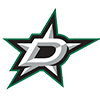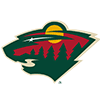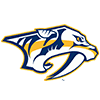The XFL is a hybrid between a keeper and dynasty league — we have 40-man rosters during the season and can keep minor leaguers at $0 cost, but we do have an annual salary cap draft (i.e., auction) and can only keep 15 players regardless of major or minor league status between seasons. Players acquired as major leaguers via the draft or free agency escalate $5 every season, and players acquired who have fewer than 50 cumulative major league at-bats or 20 major league innings pitched (for purposes of this discussion, I'll call them "minor leaguers") escalate $3 every season once they become major leaguers. If you are in the middle of a rebuild and want to keep eight minor leaguers and only seven major leaguers, that's your prerogative, but you don't get to keep 15 major leaguers and extra minor leaguers at no cost. There's a real premium on getting the elite prospects and keeping them as they become stars, all while escalating just $3 per season out of our $260 budget. Ideally you'll have a slew of those players hitting at the same time.
The XFL is also unique in that while there's a slew of fantasy analysts in the league, it's not necessarily a so-called-experts league. Born out of the First Pitch Arizona Symposium, I believe the general idea of the league was created by Ron Shandler and Steve Moyer, to be the first "experts" keeper league, though one need not have a fantasy sports company to
The XFL is a hybrid between a keeper and dynasty league — we have 40-man rosters during the season and can keep minor leaguers at $0 cost, but we do have an annual salary cap draft (i.e., auction) and can only keep 15 players regardless of major or minor league status between seasons. Players acquired as major leaguers via the draft or free agency escalate $5 every season, and players acquired who have fewer than 50 cumulative major league at-bats or 20 major league innings pitched (for purposes of this discussion, I'll call them "minor leaguers") escalate $3 every season once they become major leaguers. If you are in the middle of a rebuild and want to keep eight minor leaguers and only seven major leaguers, that's your prerogative, but you don't get to keep 15 major leaguers and extra minor leaguers at no cost. There's a real premium on getting the elite prospects and keeping them as they become stars, all while escalating just $3 per season out of our $260 budget. Ideally you'll have a slew of those players hitting at the same time.
The XFL is also unique in that while there's a slew of fantasy analysts in the league, it's not necessarily a so-called-experts league. Born out of the First Pitch Arizona Symposium, I believe the general idea of the league was created by Ron Shandler and Steve Moyer, to be the first "experts" keeper league, though one need not have a fantasy sports company to take part in it. In fact, the two best track records in the league belong to Jeff Winnick and Don Drooker, both regular attendees of First Pitch, but neither being a proprietor of the fantasy baseball industry/community. We also draft early — usually in person at First Pitch, in a live auction, without any materials in front of us, with the exception of a season-ending major league roster of eligible players. That means this part of the draft is done before most projections for the following season are complete — though maybe not all, as the Baseball Forecaster requires an early set of projections. It's meant to test our skills at evaluating long-term player value, and not a test of the best draft software.
I have never won the XFL. I have never come close to winning the XFL. While it's true that I inherited a team that was in pretty bad shape eight years ago, it was eight years ago! I've made more than my share of mistakes along the way, both in the keeper process (hello, picking up Paul Goldschmidt as a free agent in his rookie season and deciding that $10 was too much to keep him the following year), and in trying to time my run to contend. Way too often I'd think that it was time to contend, but then only go halfway, and then sell off when I'd inevitably fall short. But this year was different! I'd patiently bided my time, and added all sorts of great keepers, like Juan Soto and Vladimir Guerrero Jr. as minor leaguers, thanks to James Anderson's awesome prospect rankings. I didn't overreach too soon, and I had a coherent plan of attack this offseason, instead of getting caught behind by the early freeze and trade deadline before the draft. I'd take my shot at dethroning the dragon that was Doug Dennis's defending champion team, and rightfully claim what was mine!
(Narrator: "This year was not different.")
I did not win XFL. While I finished in fourth place, I didn't really come close to winning XFL — trailing Don Drooker (who won for a whopping fifth time) by 28.5 points.
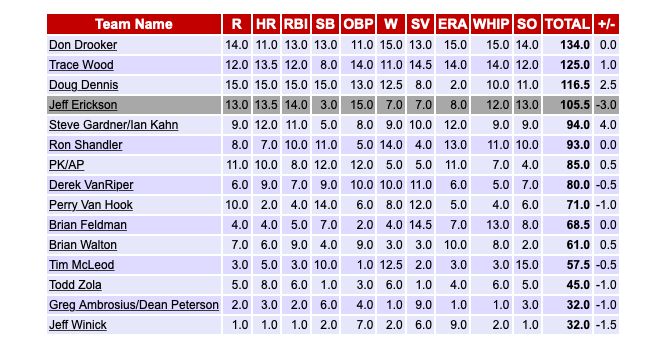
The spread in the standings is so wide because of the keeper/dynasty nature, with teams punting early to stash loads of prospects. Jeff Winnick finished last this season, but he was contending last year and had for many years before that.
I made a number of "go-for-it" trades this offseason, both before and after the draft, signaling my intentions to compete.
Pre-Draft Trades
1. Erickson trades pick 4.1 (46) in the March supplemental draft and Cole Tucker to Greg Ambrosius / Dean Peterson; Ambrosius / Peterson trade Lourdes Gurriel Jr. ($11/+5) and pick 8.7 (112).
I "bought high" on Gurriel following his first full season as a starter with the Jays, knowing full well he wasn't likely to repeat his batting average stats from 2020, but I still viewed him as a good power source with decent counting stats on a loaded team. This trade was completed on Oct. 2 (I told you we get an early start to the offseason in the XFL!), obviously well before George Springer signed with the Jays. Tucker was included strictly for roster balancing — every trade in this league requires equal number of players being dealt.
Gurriel declined, of course, particularly with his BA (and as a result, his OBP, which is what we use as a category), batting .276/.319/.466 with 21 homers, 84 RBIs, 62 runs and one stolen base. I had hoped for 5-7 bags from him. Overall, he was a mild disappointment — he earned right around his salary, but I had hoped for a profit from this spot in a keeper league. At $16 in 2022, he's a borderline keeper.
Greg/Dean used the pick on Anthony Bass, hoping to grab the Marlins' closer. I would have used the pick on Dodgers' prospect Wilman Diaz, who I drafted four picks later. I used pick 8.7 on Jackie Bradley Jr., who obviously didn't work out.
2. Erickson trades Adley Rutschmann ($0/+3) and Andrew Vaughn ($0/+3) to Ian Kahn / Steve Gardner for Bryce Harper ($28/+3) and Giovanny Urshela ($11/+5).
Nothing quite announces ones attention to vie for the crown than to deal away two top-10 prospects! This trade was the point of no return — no more incremental deals, we're going for it!
I can't complain about Harper's performance, though I have to take issue with the output of his teammates and their impact on his counting stats. Harper hit .309/.429/.615 with 35 homers and 13 stolen bases. He's a legitimate MVP candidate. Alas, those 35 homers translated into only 84 RBIs and he scored 101 runs, which is less than you'd think from someone with a .429 OBP. Nonetheless, I did fine in both RBI & runs despite that shortfall. Urshela missed 46 games and was disappointing this season (.301 OBP, 14 HR, 49 RBIs, 42 R, 1 SB).
How much will this trade hurt in the long run? Rutschmann remains a top-10 prospect, topping some prospect lists after a strong season at Double-A and Triple-A. How much will Baltimore manipulate his service time next season? Presumably we'll see him in the bigs pretty early next year, maybe even at the start of the season if the service time clauses change with the next Collective Bargaining Agreement. I wouldn't hold my breath on that, though — I don't think the owners perceive that to be a problem. Still, everything points to Rutschmann being great. I don't mind trading catching prospects, however — the specter of Matt Wieters still hangs around in my thoughts.
3. Erickson trades Spencer Howard and Nolan Jones to Jeff Winnick for Jack Flaherty and Rafael Montero.
Initially this trade looked like it would be a solid "win-now" deal. Flaherty fired on all cylinders to begin the season, winning eight of his first nine starts. Even if Montero was a relatively predictable bust, Flaherty was the ace I needed. But then Flaherty suffered a major oblique injury in May and won just one more game the rest of the season. He'll cost me $31 next season, which makes him a borderline keeper, even while I'm still in win-now mode. There's a reasonable chance I can get him back in the auction for the same price or less, so I'd be better off using that keeper slot on someone else.
Even still, this doesn't look like a horrible trade ... yet. Howard had a 7.43 ERA and was dealt to the Rangers. Jeff Winnick cut him eventually, and though he was later picked up by Greg/Dean, his +3 status is now gone for them. Jones struggled at Triple-A Columbus, striking out 30 percent of the time before his season ended with a high-ankle sprain so severe it required surgery. Still, he had a .787 OPS at age 23 in Triple-A, there's still hope for him. He shows up at 180 on James Anderson's latest prospect list, which would probably be high enough for me to keep him if I had a rebuilding team.
4. Erickson turns down at least two chances to get good value out of Victor Robles.
Leaguemate Brian Feldman expressed interest in trading for Robles, offering either a prospect or a pick. That wasn't my first choice, given my emphasis on competing now. And Derek VanRiper didn't have a specific offer for Robles, but he was a known sympathizer and we had dabbled in some trade talks.
But the real whopper was missing an opportunity to trade with Trace Wood, who finished second in the league. He offered Lance Lynn ($11, +5) for him. Not only would Lynn have fit my team perfectly and lessened the blow from the injuries suffered by Flaherty, Zac Gallen and Chris Paddack (more on them later), but also it would have knocked down one of my primary competitors by a peg. He would have lost the services of a really reliable starter, and been anchored (in the "sinking to the bottom of the ocean" sense) by Robles's struggles. Moreover, I would have emphasized getting speed more in the auction, which was a clear shortcoming for my team all season. Yuck.
The real takeaway, though, is an important one — if you're "all-in," be all the way in. The red flags on Robles were so pronounced that they were practically glowing, but I didn't want to give up on him on the chance he re-materialized into the prospect he was touted to be, especially because I had him as a precious +3 contract. But I was making other bold moves, including trading perhaps the best prospect in the game. When you're going for it in a league like this, it's no time for "Half Measures."
(And yes, this a gratuitous opportunity to add a clip from one of the best episodes of one of my favorite all-time shows.)
Draft Decisions
After all of my trades and non-trades, here was my keeper list:
1. Vladimir Guerrero Jr., $7 (+3)
2. Juan Soto, $10 (+3)
3. Corbin Burnes, $6 (5)
4. Chris Paddack, $7 (3)
5. Zac Gallen, $11 (3)
6. Jack Flaherty, $26 (5)
7. Bryce Harper, $28 (3)
8. Rafael Montero, $10 (5)
9. Gio Urshela, $11 (5)
10. Lourdes Gurriel Jr., $11 (5)
11. Victor Robles, $10 (3)
12. Ketel Marte, $18 (5)
13. Brennen Davis (ML)
14. George Valera (ML)
15. Trevor Larnach (ML)
16. Luis Rodriguez (ML)
For this year only, we all had an extra keeper, as long as it was used on a minor leaguer, given that we didn't have a minor league season in 2020 to help us evaluate them. Having kept one closer, I was committed to getting at least one more, either one at the top level, or two cheaper alternatives. There were plenty of good closers available, too, though the FA market was mostly unsettled when we drafted in early December. The top closer options included Liam Hendriks, Raisel Iglesias, Aroldis Chapman, Edwin Diaz and Ryan Pressly, though in the case of Pressly and to a lesser extent Diaz, there was some concern that they wouldn't have the job once everything washed out in the free agent cycle.
Yeah, I didn't get any of those top options, and I regretted it all season. Instead, I thought I got good discounts on two pitchers in the next tier, Taylor Rogers ($13) and Alex Colome ($9). Alas, the White Sox didn't re-sign Colome, signing Hendriks instead, and Colome then landed with the Twins. I had spent $22 on one team's closer spot ... and even then I didn't lock down all the saves for the them. We all make mistakes on draft day, but that was a crippling one that I could never fully dig out from — I ended up with 7/15 points in saves, and wasted opportunities to use active roster spots on wins and strikeouts instead of chasing those missing saves all season. In most of my leagues I will almost certainly ensure that I have at least one solid closer to begin the season, especially if I'm in a contending cycle.
Here are the results for the rest of my team post-auction, with the newly added players in white background:

Suffice to say, I did not help myself much in the draft. The only two good additions were Franmil Reyes and Sandy Alcantara, with Alcantara being a big win. Stallings didn't kill me as a $1 catcher, but he also wasn't much more than a $1 catcher. Davis and DeJong were also disasters.
March Supplemental Draft
With such an early draft date, the March reserve draft is hugely important. Free agents are now signed, trades have been made, job battles in spring training have been resolved (especially in our case this season, as we held the March draft on March 30), and it's also our first crack at prospects that haven't hit the majors yet. So many good keepers have been added in the March supplementals, so it's important to have done your research on who the big movers were. There were fewer obvious big changes this season, given the lack of a minor league season, but there's still the additions from the recent MLB draft and those players who saw time at the extended training camps in 2020 and those who impressed this spring.
I completed a huge post-draft deal with the impressive team combo of Ian Kahn/Steve Gardner. To know Ian is to know that he's a prolific trader, and he paired up with Steve over winter. We talked before the March draft on a deal centering on Yu Darvish and Brennen Davis, but he wanted to make sure that his prospect of choice, Garrett Mitchell, was available at 1.7, the first of my two first-round picks in the draft. He was, and so we completed the trade — I got Darvish and his last pick in the March draft (which was Michael Lorenzen — oh well, that didn't work out), and he got Davis and Mitchell, along with my first-round pick in next March's supplemental draft.
Darvish started off on fire, similar to his Padres teammates. After a six-inning, one-run outing against Arizona on June 27, Darvish had a 7-2 record with a 2.44 ERA, 0.94 WHIP and 115 strikeouts. He would win one more game the rest of the season, posting a 6.65 ERA, 1.31 WHIP and 84 strikeouts over a 70.1 IP stretch to finish the season. I'm still at a bit of a loss at what happened — many have argued that the crackdown on grip enhancement is to blame, but that wouldn't explain his good June starts. But the effect was profound — when your ace is not your ace, but rather a net negative, it's just crushing to your chances.
As far as the rest of the March draft goes, there were some decent hits and more than a few misses. That's the nature of the beast — we're selecting among players that weren't deemed worthy of being in our top 345 active players plus kept prospects, so the error rate is high. Here are my selections.
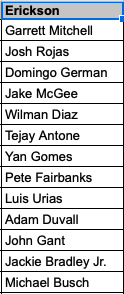
Josh Rojas worked out pretty well eventually, though not on my watch — I included him in an early April deal. Jake McGee at least made up the stagger for one missed closer, so that was a big hit. And getting the NL RBI leader in Adam Duvall really late was a smash hit. But Domingo German, taken one pick after Carlos Rodon went to Perry VanHook, was a huge disappointment, Tejay Antone got hurt multiple times and now is recovering from Tommy John surgery, and I whiffed on getting saves from the Rays with Pete Fairbanks when Diego Castillo was available.
In-Season Moves
I wasn't unique in having to play "whack-a-mole" in covering multiple injuries on my roster, but those efforts started early, with injuries to Zac Gallen, J.D. Davis and Ketel Marte right away. That dictated an early season deal that actually worked out pretty well:
Erickson trades J.D. Davis, Trevor Larnach, Josh Rojas and a second-round pick;
Jeff Winnick trades Nolan Arenado, Jose Altuve, Mike Clevinger and a 15th-round pick.
Both Altuve and Arenado hit 30 homers this season on my roster, and while I would have liked Altuve to run more often, they accomplished what I needed. Clevinger will cost $28 while coming off Tommy John elbow surgery next season, so he's a borderline decision to keep — and leaning pretty hard on the negative side.
Rojas performed pretty well after a slow start, so Jeff Winnick will probably have a keeper on his hands. Davis, on the other hand, was an abject disaster, so that dart throw didn't work out. I'm curious to see what Jeff does with Trevor Larnach, who will have a $4 +3 contract next season. He was a top-50 prospect when promoted by the Twins, but really struggled with his first taste of major league pitching, striking out nearly 35 percent of the time before getting sent down in August. I think I'd hold him due to his power potential, and chalk up this season to rookie struggles and a hand contusion suffered in July.
To my regret, I didn't make any other deals in-season to bulk up my balky pitching or add more speed. See also my "no half-measures" comment from above.
Here are the players added in our monthly supplemental drafts, which are held on the first Sunday night of each month:
May adds: Kendall Graveman, Nick Pivetta, Jose Trevino, Sean Doolittle
May drops: Michael Lorenzen, Pete Fairbanks, Chance Sisco, Alex Colome
June adds: Taylor Walls, Ryan Jeffers, Josh Fleming, Mauricio Dubon
June drops: Doolittle, Trevino, John Gant, Jackie Bradley Jr.
July adds: Merrill Kelly, Eli White
July drops: Dubon, Rafael Montero
August adds: Kris Bubic, Cal Quantrill
August drops: Taylor Walls, Eddie Rosario
September adds: Garrett Whitlock, Drew Smyly, Chad Green
September drops: Tejay Antone, Taylor Rogers, Josh Fleming
Cal Quantrill is a keeper, most likely, Whitlock is interesting for next year, and both Graveman and Pivetta were useful at times. Otherwise, most of these moves were whiffs. In previous years I've nabbed some pretty good talent in the supplementals, but it didn't work as well this year. A good lesson to draw from this perhaps is, once again, to be more aggressive in the trade market to address any shortcomings in a "go-for-it" season. It's hard to find plug-and-play solutions from the waiver wire, more so when you're picking at the back end of the first round each month.
Postscript
I'm in "go-for-it" mode again for 2022 — any team with Juan Soto and Vladimir Guerrero Jr. locked up considerably under cost must take its chances for competing seriously. Besides, with my trades last season, I've already crossed the Rubicon. I've already started sending trade offers for a closer, and my keeper list will have a greater emphasis on current major leaguers. Now if I can only figure out what to do with Chris Paddack and Victor Robles — hey current league members reading this, send me your "buy-low" trade offers!





















